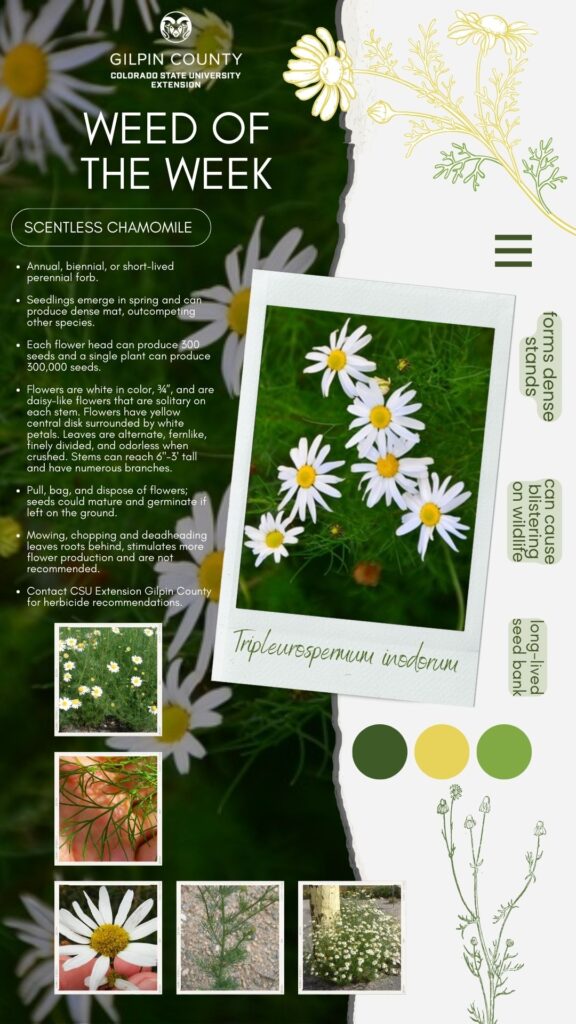
Scentless chamomile (Matricaria perforata)
- It can be distinguished from pineapple weed, a native weed, by pineapple weed’s pleasant pineapple scent (crush the foliage) and that pineapple weed does not have any white “petals”
For more information:
http://www1.agric.gov.ab.ca/$department/deptdocs.nsf/all/agdex871?opendocument
http://www1.agric.gov.ab.ca/$department/deptdocs.nsf/all/agdex39/$FILE/scentless_chamomile.pdf


